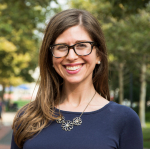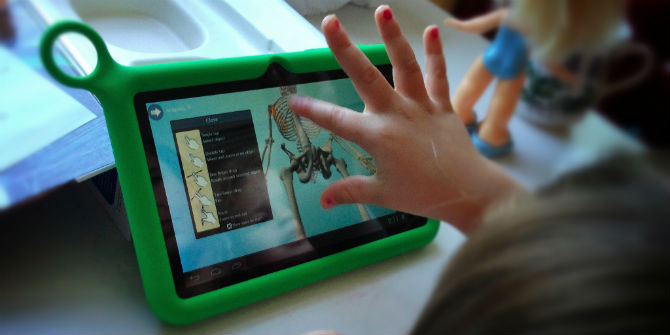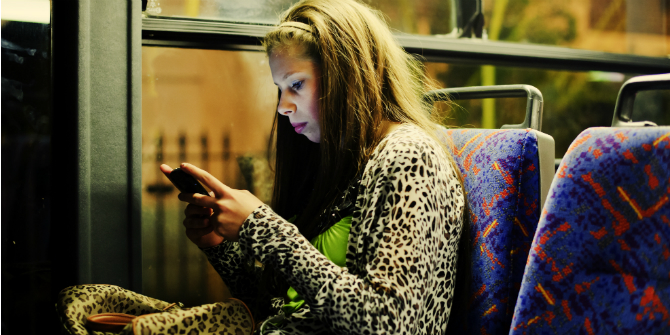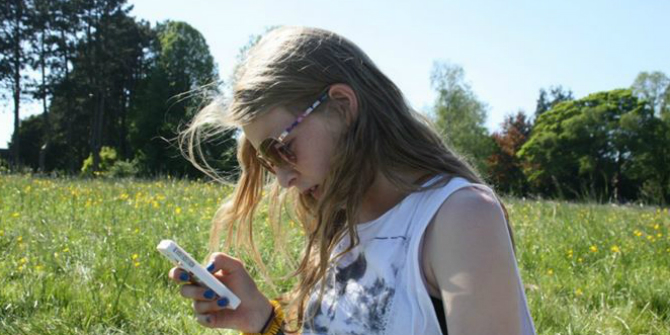 Individuals with disabilities make up 15% of the global population, or approximately 1 billion people. There are an estimated 93–150 million children with disabilities globally, of which nearly 80% live in the Global South. Yet disabled children have found it difficult to realize their rights in the digital age. For www.parenting.digital, Meryl Alper explores the state of digital inclusion and exclusion when it comes to children with various disabilities and the need to balance vulnerability, support, and safety in order to promote and protect disabled children’s digital rights.
Individuals with disabilities make up 15% of the global population, or approximately 1 billion people. There are an estimated 93–150 million children with disabilities globally, of which nearly 80% live in the Global South. Yet disabled children have found it difficult to realize their rights in the digital age. For www.parenting.digital, Meryl Alper explores the state of digital inclusion and exclusion when it comes to children with various disabilities and the need to balance vulnerability, support, and safety in order to promote and protect disabled children’s digital rights.
Children with disabilities face challenges similar to others their age, including access to education, healthcare services, and employment, as well as opportunities to leverage media for societal participation. They are impacted, though, in vastly more complex ways. These dynamics differ across types of disabilities. Barriers to their inclusion may also be compounded by intersections with class, caste, race, ethnicity, gender, sexuality, culture, religion, and geography.
The lives of disabled children, and their claims to human rights, unfold across intertwined digital and physical domains. This poses two key challenges. First, while technologies, especially digital ones, are essential for many people with disabilities to gain key literacies and fully participate in their societies, they remain out of reach for most. Although two-thirds of the world’s nearly 3 billion Internet users are from the “developing world,” it is estimated that only 5–15% of children and adults in Global South countries who require assistive technologies for societal participation have basic access to them, let alone the resources to support those practices. Despite these patterns, people with disabilities, but especially children from developed countries, typically figure into public discourse as exemplary beneficiaries of the “digital revolution.”
Second, we know very little about digital citizenship— encompassing critical thinking, ethical discussion, and decision-making—for children with disabilities, and even less about what the conditions for such citizenship look like. Children are a generally marginalized group compared to adults, who assume the role of universal actors in rights discourses within academia and policy making. If children’s voices and experiences are minimally considered in rights debates in the digital age, there is even less attention when it comes to children with disabilities and their use of media for digital and cultural citizenship.
In response to these challenges, my colleague Gerard Goggin and I argue in a recent article in New Media & Society for considering children and individuals with disabilities as overlapping categories with respect to digital media and human rights, specifically those rights conceptualized and set down in the United Nations Convention on the Rights of the Child (UN CRC) and the UN Convention on the Rights of Persons with Disabilities (UN CRPD).
In our paper, we outline how normative frameworks fundamentally shape legal and policy agendas on children’s digital rights regarding the Internet, mobile media, and associated technologies. We explore the state of digital inclusion and exclusion when it comes to children with various disabilities, especially in the Global South. We also look at how the digital-related rights enunciated in the UN CRPD connect with children’s rights in the UN CRC. Though each embody important policy approaches, research, and measures, these are not as yet brought together effectively.
With this fruitful intersection in mind, we also propose some elements of a global agenda for the rights of children living with disability in the digital age:
- Greater need for baseline data on the digital media uses and practices of children with disabilities, and inclusion in studies and data collection on digital media use among children.
- Acknowledgment that digital media can make life easier and more pleasurable but can also introduce new inaccessible spaces for children with disabilities.
- Potential risks that a focus on rights in the digital domain reinforces the non-disabled child as the norm, and the importance of creating spaces and opportunities where disabled children can be heard.
- Need to balance rights to protection with rights of children with disabilities to exercise appropriate levels of agency, autonomy, and control.
- Research that takes account of disabled children’s concerns as well as adults, addressing the complex issues of how to conceive and undertake participatory research.
- Framing and designing research methods (such as online surveys and face-to-face interviews) for accessibility and participation, allowing for multiple communication methods.
- Guarantees that consultation, governance, and participation in policy and design are “friendly” to disabled children and adopt best practices from both children’s media policy and from the disability field.
- Expansion of public programs addressing the digital and social rights of children with disabilities (including digital citizenship and information literacy initiatives), promoting their systematic evaluation and discussion of effectiveness.
In conclusion, there has been a growing sense of the need to carefully consider and weigh real issues of vulnerability, support, and safety against the long overdue rights of children that might flourish with digital cultures and technologies. This remains greatly contested, but also needs to be extended to include children with disabilities as a heterogeneous population. As these efforts proceed, we are mindful that our moves and others’ moves to advance their rights should be cognizant and grounded in the social worlds in which disability and people with disabilities arise and live.
First published at www.parenting.digital, this post gives the views of the authors and does not represent the position of the LSE Parenting for a Digital Future blog, nor of the London School of Economics and Political Science.
You are free to republish the text of this article under Creative Commons licence crediting www.parenting.digital and the author of the piece. Please note that images are not included in this blanket licence.
Featured image: photo by Breakingpic on Pixels





